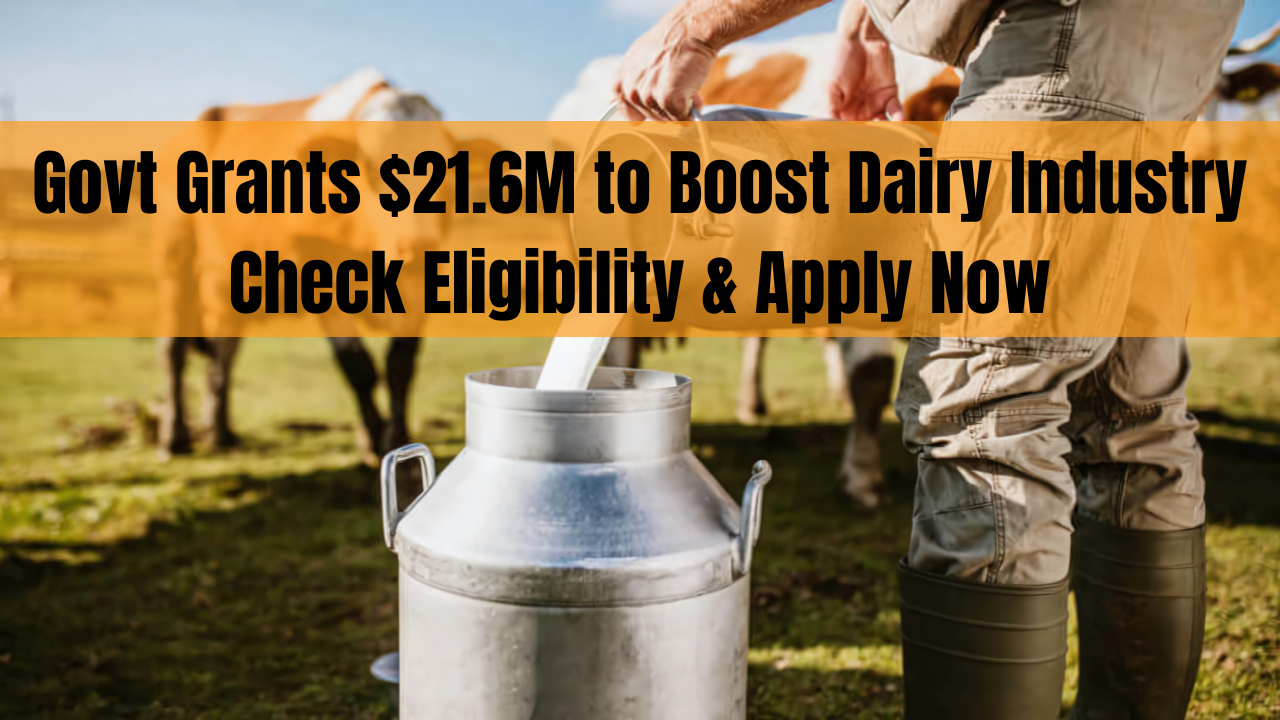Governor Kathy Hochul’s Dairy Modernization Grant Program is transforming the future of New York’s dairy industry by awarding $21.6 million to more than 100 farms across the state. This landmark initiative, announced during Dairy Month, empowers family-run and cooperative dairies to upgrade infrastructure, adopt new technologies, and enhance resilience against extreme weather and market fluctuations.
Also Read: $7,990 Canada Child Benefit June 2025 – Payment Dates & Who Qualifies
Background and Program Overview
The Dairy Modernization Grant Program was first highlighted in Governor Hochul’s 2024 State of the State address. Its goal is to strengthen New York’s position as a national leader in dairy production by providing critical funding for on-farm improvements. The program is administered by the Farm and Food Growth Fund (FFGF) in collaboration with the New York State Department of Agriculture and Markets.
Award Details and Regional Impact
A total of $21.6 million has been awarded to 103 dairy farms, with grants ranging from $50,000 to $250,000. The funding is distributed across eight regions, ensuring broad support for both small family farms and larger cooperatives.
-
Capital Region: 9 farms, nearly $1.8 million
-
Central New York: 18 farms, over $3.9 million
-
Finger Lakes: 20 farms, over $4.3 million
-
Mid-Hudson: 1 farm, $147,000
-
Mohawk Valley: 11 farms, over $2.1 million
-
North Country: 15 farms, over $3.3 million
-
Southern Tier: 13 farms, nearly $2.6 million
-
Western New York: 13 farms, over $2.7 million
How the Grants Are Being Used
The Dairy Modernization Grant Program funds a wide range of projects aimed at improving efficiency, sustainability, and resilience:
-
Expanded Milk Storage: Farms are increasing on-farm milk storage capacity, reducing the risk of raw milk dumping during emergencies.
-
Advanced Cooling and Energy Systems: Investments in modern cooling systems, backup generators, and energy-efficient technologies help farms maintain product quality and reduce operational costs.
-
Improved Transportation Infrastructure: Upgrades to milk loading systems, pipelines, and tankers streamline the supply chain and reduce handling time.
-
Environmental Sustainability: The program supports the adoption of climate-resilient practices, such as heat recovery systems and water reclaim systems, aligning with New York’s broader sustainability goals.
Example Projects:
-
Glory Days Farm (Lewis County): Installing a 3,000-gallon bulk tank, upgraded compressors, and a permanent generator to reduce costs and boost resilience during power outages.
-
Allen Farms (Scipio, Cayuga County): Adding three direct load ports and a high-speed milk loadout pump for faster truck fill-ups.
-
McGarr Farms (Genoa): Expanding milk storage from 2,000 to 10,000 gallons for improved cooling efficiency.
-
Patterson Farms (Aurelius): Replacing a 1,300-gallon milk silo with a 20,000-gallon silo, increasing total storage from 14,300 to 33,000 gallons.
Economic and Community Impact
New York’s dairy industry is the backbone of the state’s agricultural economy, supporting thousands of jobs in rural communities. The majority of the state’s nearly 3,000 dairy farms are family-run, generational operations that benefit directly from this program. By modernizing infrastructure, the grants help safeguard the dairy supply chain, create forward-looking opportunities for the next generation of farmers, and ensure the continued viability of rural economies.
Supporting Sustainability and Innovation
The Dairy Modernization Grant Program is part of a broader state commitment to agricultural sustainability. The FY26 Enacted Budget includes an additional $10 million for a second round of funding and increases support for environmental programs like the Climate Resilient Farming initiative and Soil and Water Conservation Districts.
Recent Dairy Sector Investments
Governor Hochul has championed significant investments in New York’s dairy manufacturing sector, including:
-
$650 million fairlife production plant in Webster
-
$518 million Great Lakes Cheese facilities in Franklinville
-
$30 million expansion at Agri-Mark’s Chateaugay facility
-
$1.2 billion Chobani facility in Rome, Oneida County, set to produce over one billion pounds of dairy products annually
These projects, combined with nearly 300 world-class dairy processing plants, reinforce New York’s status as the leading milk producer in the Northeast and the fifth-largest dairy state in the nation.
What Industry Leaders Are Saying
-
Governor Kathy Hochul: “With this $21.6 million investment, we’re giving hardworking dairy farmers and cooperatives the tools they need to grow, innovate, and lead in a changing market.”
-
New York State Agriculture Commissioner Richard A. Ball: “Our dairy farmers and processors are second to none… I am so pleased to see this funding being awarded to these deserving farms.”
-
Farm and Food Growth Fund President and CEO Todd Erling: “Ensuring efficient and updated infrastructures will not only strengthen and safeguard the supply chain, but will also help build forward-looking opportunities for the next generation.”
-
Glory Days Farm Owners (The Beyer Family): “This program encourages the adoption of efficient technology that improves food safety with more consideration to environmental impacts, securing the future of dairy in New York.”
Frequently Asked Questions
Q: How many farms received funding from the Dairy Modernization Grant Program?
A: 103 dairy farms across New York received a total of $21.6 million in grants.
Q: What types of projects are eligible for funding?
A: Eligible projects include expanding milk storage, upgrading cooling and energy systems, improving milk transportation, and adopting climate-resilient practices.
Q: Will there be more funding available in the future?
A: Yes, the FY26 Enacted Budget includes an additional $10 million for a second round of the program.
Dairy Modernization Grant Program Data
| Region | Number of Farms | Total Awarded |
|---|---|---|
| Capital Region | 9 | $1.8 million |
| Central New York | 18 | $3.9 million |
| Finger Lakes | 20 | $4.3 million |
| Mid-Hudson | 1 | $147,000 |
| Mohawk Valley | 11 | $2.1 million |
| North Country | 15 | $3.3 million |
| Southern Tier | 13 | $2.6 million |
| Western New York | 13 | $2.7 million |
Governor Kathy Hochul’s Dairy Modernization Grant Program marks a significant investment in New York’s dairy industry, empowering farms to modernize, innovate, and thrive in an evolving agricultural landscape. By supporting infrastructure upgrades, sustainability, and economic resilience, the state is securing the future of its largest agricultural sector and the rural communities that depend on it.

